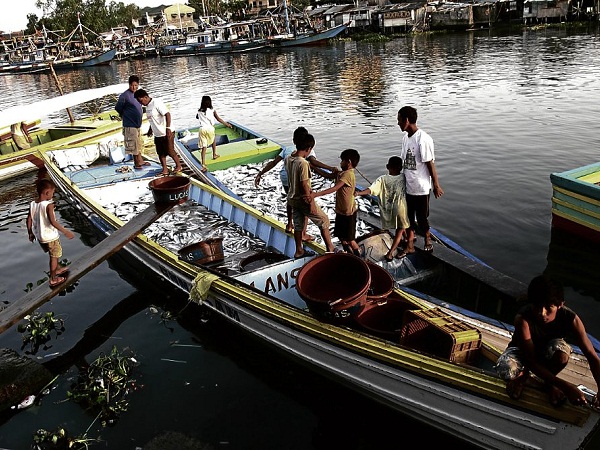‘Bangus overproduction’ causes sinking–study

THE CITY of Dagupan in Pangasinan thrives on its reputation as the bangus (milkfish) capital, but a new study from the World Wide Fund for Nature suggests that the proliferation of bangus fishponds has worsened floods and has increased the chances of Dagupan’s sinking. EV ESPIRITU/NORTHERN LUZON
DAGUPAN CITY—The overproduction of bangus (milkfish), this city’s ticket to fame and economic development, could be a reason why Dagupan’s continued flooding and sinking have worsened, according to a study conducted by World Wide Fund for Nature, an international conservation organization.
Jose Ma. Lorenzo Tan, WWF-Philippines vice chair and chief executive officer, said the growth of the city’s milkfish trade has affected the behavior of its underground water sources, which allows seawater to gradually intrude into habitable lands.
“The city’s swampy areas were converted into fishponds … When you take groundwater to mix [with] saltwater to create that special brackish water where special [Dagupan] bangus dwells, you are depleting the aquifer especially if the rate of [groundwater] extraction exceeds the rate of recharge,” Tan said.
“When it reaches the point when the aquifers are depleted, saltwater from the sea advances and intrudes into the emptied aquifers. This causes surface land to sink.”
Fishponds in the city occupy 985 hectares of land, according to the Department of Agriculture.
Article continues after this advertisementTan discussed Dagupan’s woes at the sidelines of a Thursday forum which discussed the business risk assessment of the city in light of climate change.
Article continues after this advertisementThe WWF and the BPI Foundation Inc. had conducted risk analysis of eight cities, which include Baguio and Laoag cities, to help government planners and policymakers determine how their communities can deal with extreme weather.
Tan said the study has concluded that the worsening weather was not the major reason for Dagupan’s floods, the most recent was this month when storms and monsoon rains struck Luzon.
“Environmental data over the last 30 years show that Dagupan seems to be fairly stable. Temperature is constant, rainfall is constant, [and] there are no trends suggesting an increase in typhoons had struck the province,” he said.
“[But] to say you’re not affected would be presumptuous. We are just talking about historical data in the past 30 years. Climate change could shift suddenly and the city could be affected in the coming years,” he said.
So why is Dagupan sinking? Tan said officials should focus on the city’s fishpond development.
“It was not climate change that had been causing the flooding of Dagupan. It is clearly the pattern of development the city has followed over the past 30 years. Urban planning is non-existent, a pattern consistent with many Philippine cities—very haphazard land use, inappropriate extraction rates of groundwater …,” he said.
Land subsidence has also affected Bulacan towns like Hagonoy, Calumpit and Obando, and Malabon and Navotas in Metro Manila, as well as other coastal communities where the fish industry has exceeded its carrying capacity, he said.
He said this trend in the fish trade is “clearly irreversible.”
According to the WWF study, the city’s bangus industry is not even a “growth sector” because Dagupan has become a second-generation city which earns from trade, personal services, and the remittances from overseas Filipino workers.
Tan said the study discourages Dagupan from converting fishpond areas into commercial districts as a climate change solution.
He said the best thing is for the city to replant mangroves to serve as a natural seawall against strong waves.